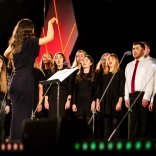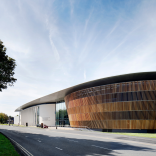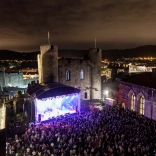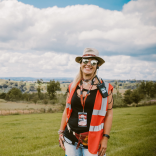In late 2019, a group of young Welsh, Irish and Scottish musicians gathered for a 10-day retreat in a farmhouse in Llanidloes, right in the middle of rural Wales. The project was called Mamiaith (‘mother tongue), an indigenous language and music collaboration’ organised by Wales Arts International.
The project wanted to explore issues around indigenous language, culture and identity, looking at how music carries language while also transcending language across the globe.
It was a completely new cultural experience for Irish singer-songwriter Lauren Ní Chasaide.
“I’d never done a song-writing residency before, and culturally I didn’t know anything about Wales,” she says. But one thing quickly emerged for her. “At any given time, the Welsh people in the group would want to break out in four-part harmony,” says Lauren. “Is that a national thing? It was fascinating!”
Jordan Price Williams was one of the Welsh contingent (and, presumably, one of the four-part harmonisers). He studied classical double bass at the Royal Welsh College of Music and Drama, and is one of the best folk multi-instrumentalists of his generation.
“The main thing that came out was finding common ground in our varying heritages,” he says. “Everyone who plays traditional music within the British Isles likes to think of our individual traditions as being unique, and they’re really not. Everyone has a jig or reel or hornpipe.
"But in Wales the music is different, and I think it’s because in Scotland and Ireland they carried on playing their music across the 19th and 20th centuries, so it carried on being developed. When the Methodists moved into Wales in the 19th century, people stopped playing traditional music. So the music has been preserved in an earlier form.”
Not everything was lost, though: there were still plenty of triple-harpists and clog dancers around to pass on their knowledge. Cerdd dant – the uniquely Welsh art of singing an improvised counter-melody over a harp tune – remained in rude health. The medieval harpist Robert ap Huw (c1580-1665) had thoughtfully written down a manuscript of harp music, which preserved the bardic tradition from centuries before (the music has been painstakingly recreated by the duo Bragod, incidentally).
The Welsh Folk Song Society was duly set up in 1906, and its tune-hunters set off on safari into the rural heartlands, collecting and notating songs, a job continued by the St Fagans National Museum of History during the 1960s and 70s.
Meanwhile in Ireland, a new ‘Celtic folk’ idiom was being created by Irish bands like The Chieftains, The Bothy Band and Planxsty. Thanks to them, and a huge audience in the Irish diaspora in America, Ireland became the dominant force in Celtic music.
Wales had a bit of catching up to do. In 1976 the Wales Tourist Board, as it then was, put together a quartet of top Welsh folk musicians to fly the musical flag at the Festival Interceltique de Lorient, a vast annual gathering of Celtic musicians in Brittany.
The band wrily named themselves Ar Log (it means ‘for hire’). At Lorient they met another Irish folk behemoth, The Dubliners, who encouraged the Welshmen to stick together and turn professional.
Ar Log continued to expand - in 1983 the musical polymath Stephen P Rees joined. He’s both an academic – he teaches music at Bangor University – and a gifted multi-instrumentalist who went on to play a central role in the Welsh folk music revival, later forming another seminal Welsh band, Crasdant. For their source material, the Welsh revivalist dug deep into Welsh musical history. They toured the world, establishing a solid ground on which Welsh folk could build.
“For people of my generation it was very important because it was something we didn’t seem to have, and therefore we tried to make it,” says Stephen.
In the 1990s he helped to set up Clera - The Society for the Traditional Instruments of Wales - which revived interest in old instruments like the crwth - a bowed lyre – and a shepherd’s pipe called the pibgorn. The whole idea of ‘traditional folk instruments’ is a bit moot: Irish music happily absorbed the banjo and bouzouki into its repertoire. But the old instruments found a voice in new music.
“You do what you can with what you have,” says Stephen. “And if you’ve got a revivalist bent, which I and many of my colleagues did, then you want to work out how these instruments sounded and how they worked. The great thing about the pibgorn is you can integrate it into a group, just about. It’s not a great idea to do that with the crwth: it’s a solo instrument, and it’s great for accompanying a solo singer.”
Stephen also co-founded trac (Folk Development for Wales) to nurture young talent. “It’s a new way of transmitting traditional music - through group workshop teaching, as opposed to the oral tradition from father to son, and so on,” he says.
The result is a new generation of young Welsh musicians who are fantastically literate in the music of their cultural past, but totally unafraid to rip up the rule book. For instance, Jordan Price Williams draws a lot of inspiration from the former mining village where he grew up, Cwmafan, in the South Wales Valleys.
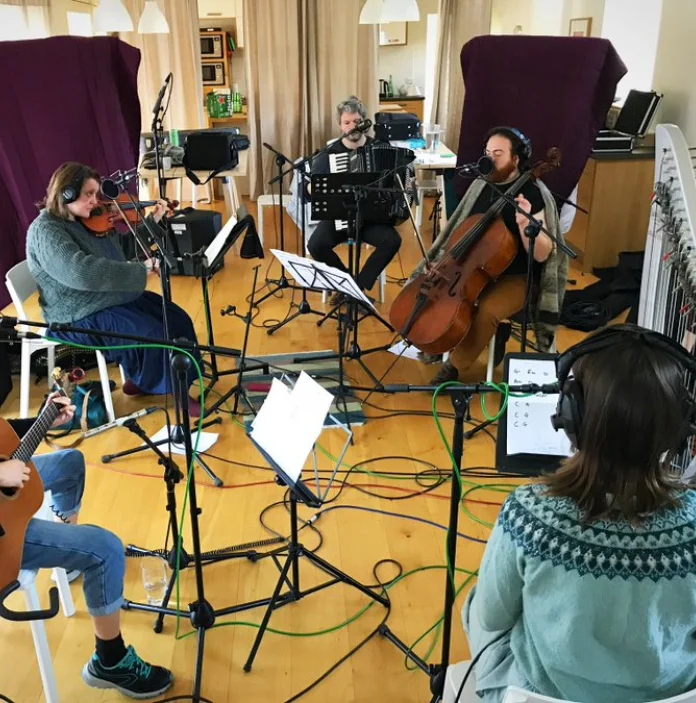
“It’s not direct musical inspiration,” he says, “It’s just the way the people are, and memories I had as a kid of how people interact with each other and the sort of things that I saw in my grandparents and their parents. That kind of generation doesn’t really exist in a place like that any more. That’s part of the reason why I’m so obsessed with traditional music. There’s this wonderful connection, not just to the landscape or myths and legends, but to normal people from the past, people who don’t have their names written down in great history books. You might find their graves in a chapel in the village somewhere: non-special people but intensely special in their own way.”
It’s a similar story in Ireland. Lauren Ní Chasaide comes from a big extended family of musicians: her father’s cousins include the folk group Na Casaidigh (The Cassidys) and the eminent composer Patrick Cassidy. But she doesn’t feel shackled by the weight of tradition. And, like all her contemporaries, she’s not keen on the whole ‘Celtic’ tag.
“It’s not something that resonates with me personally, because trad Irish wasn’t the music I naturally gravitated to when I was growing up,” says Lauren. “There’s a huge ‘Celtic’ genre in America - all that mystical stuff is popular over there. But what we do isn’t necessarily in a ‘Celtic’ style, but rather a modern style of whatever we’ve been exposed to in our lives. I’m sure I’m breaking all kinds of rules. But I don’t try and advertise my music as referencing any kind of tradition. As long as I’m not bothering too many religious tradition-keepers…”.
Jordan Price Williams feels similarly liberated. “It’s not a museum piece that’s preserved forever in formaldehyde,” he says. “It’s living and breathing, and each person who comes along will bring whatever they like. Everyone’s trying to stay within some ‘Welsh’ sound, but it can be a bit slippery to pin down exactly what that is. It’s a bit of a blessing and a burden sometimes. Some more established musicians can find it hard to digest, what we’re doing.”
Not as far as Stephen Rees is concerned, though. “You can’t control what you conjure up,” he says. “Young people are taking the sort of things that people of my generation revived, and doing something of their own with it. What’s really inspiring now is the way in which a younger generation in Wales take ‘traditional’ music in different directions. I may not like all of it, but it’s as much theirs as mine.”
And back in Llanidloes, for the Mamiath project, the young musicians are doing exactly that. Lauren Ní Chasaide clicked into a musical groove with Aberystwyth-based Georgia Ruth. “We had a similar kind of music, and we’re both learners of the language [Irish and Welsh], so our connection is more a conscious choice to use this language and to protect and nurture it, and create through it, rather than feeling culturally that it’s the only thing we know how to do,” she says.
“The songs that I wrote with Georgia came so naturally to us, even though I was learning to sing in Welsh, and she was learning to sing in Irish. We both felt really connected to it, and that was a really special experience.”
“It was really interesting to actually get to know Welsh people, too. It wasn’t even on my radar how similar the languages and social situations are. We got on so well and had so much in common. It’s strange that there’s not more cultural interaction between Ireland and Wales. I’m so inspired and fascinated by Welsh now. Opening people’s minds and realising that these languages aren’t a million miles from each other, it’s really cool to make those connections.”
More information:

